When you put money into Facebook or Instagram ads, you’ll generally see a return on investment (ROI) anywhere from 2x to 5x your ad spend – sometimes north of 15x. Of course, it’s not one-size-fits-all.
Industry, targeting, and how you run your campaigns all play a part. Your actual ROI really comes down to how well you set up, manage, and tweak your campaigns, plus how much your offer actually matters to your audience.
Thinking those numbers sound too good to be true? Well, most Australian businesses do get real results, but performance swings a lot depending on business size, budget, and what you’re aiming for. The trick is knowing how your ads are actually doing and what numbers matter so you don’t waste your marketing dollars.
Paid social ads can feel like a gamble, but with a thoughtful approach, you can build returns that grow over time. If you’re after practical, straight-shooting tips on what really shapes your ROI, keep reading.
Understanding ROI for Facebook and Instagram Ads
Figuring out your ROI for Facebook and Instagram ads helps you make smarter choices about where to put your budget. Watching the right metrics and understanding how each platform works gives you a clearer picture of what’s working, and what’s not.
Defining Return on Investment
ROI, or return on investment, is basically how much profit you make from your ads compared to what you spent. For Facebook and Instagram, the formula’s simple:
ROI = (Revenue from Ads – Cost of Ads) / Cost of Ads
If your ROI is positive, congrats! You’re making more than you spend. Negative? Time to rethink. Don’t mix up ROI with ROAS (return on ad spend); ROAS just looks at direct ad revenue vs. spend and skips other business costs.
In digital ads, you’ll want to set clear goals, sales, leads, or just getting your name out there, before launching anything. That way, you’re measuring what matters, not just chasing nice-looking numbers.
Key Metrics for Tracking ROI
Tracking ROI means watching a handful of key metrics, like:
- Conversion Rate: The percent of people who do what you want, buy, sign up, whatever.
- Cost Per Conversion: How much you pay for each sale or lead.
- Click-Through Rate (CTR): Are your ads interesting enough that people actually click?
- Return on Ad Spend (ROAS): How much you get back for every dollar spent (e.g., 4:1 means $4 for every $1).
Facebook Ads Manager and other analytics tools let you dig into these stats. Watch them regularly so you can shift budgets or swap out creative fast. Keeping a close eye on these numbers helps you squeeze more from every campaign.
Differences Between Facebook and Instagram Advertising
Facebook and Instagram use the same ad platform, but users behave differently. Facebook tends to pull in an older crowd, while Instagram skews younger and thrives on visuals.
Instagram ads shine when you’ve got bold images or videos, think Stories and Reels. Facebook, on the other hand, works well for longer messages, varied placements, and building community.
Costs and ROI can look pretty different between the two. Testing both is the only way to know where your money goes furthest. You might be surprised… sometimes the “obvious” choice isn’t the best for your brand or audience.
Factors Influencing ROI from Facebook and Instagram Ads
Your results will swing based on who you target, how you spend, and the way you build and place your ads. Tweaking these elements as part of a bigger digital marketing plan can change both your short-term wins and long-term growth.
Audience Targeting and Segmentation
Getting your audience right is half the battle. Facebook and Instagram give you loads of tools. Custom Audiences, Lookalikes, deep demographic filters. You can zero in on people by interests, behaviours, age, location, or even past interactions.
If you get your targeting wrong, you’ll just waste money on people who don’t care. Keep refining who you go after, and your ROI should climb. Always test different groups to see who’s really biting.
Try A/B testing new segments so you don’t blow your budget on guesses. Watch metrics like CTR and CPA to quickly spot what’s working and what’s not.
Ad Spend and Budget Allocation
How much you spend, and where you put it directly affects your reach. Small budgets might limit what you can do, but throwing money everywhere without a plan isn’t smart either.
Put more money behind ads that are actually delivering. Automatic bidding tools can help you pace your spend through the day and across placements, but don’t just set and forget.
Keep an eye on spend versus results in Facebook Ads Manager. Adjust on the fly if something’s working, pull the plug if it’s not.
Creative and Placement Optimisation
Your creative images, video, copy, calls-to-action makes or breaks your campaign. If your ads look boring or off-target, even perfect targeting won’t save you.
Where your ads show up matters too. Test placements like Feed, Stories, and Reels to spot where your content actually lands. Often, you’ll need to tweak your creative for each spot.
Don’t let your ads get stale. Rotate creatives often and use your data to double down on what’s working. That’s how you keep your ROI strong over time.
Measuring and Maximising Your Campaign Performance
If you want to get the most out of your Facebook and Instagram ads, you need to track everything, dig into the numbers, and keep tweaking based on what you find. Using the right tools gives you a better shot at improving conversions and understanding your customers’ journey, plus, you’ll keep your ROI moving in the right direction.
Calculating ROI Step by Step
Start by adding up everything you spent on ads and the revenue you made from those campaigns. Here’s the basic formula:
ROI (%) = [(Revenue – Ad Spend) / Ad Spend] x 100
Don’t forget to count all costs, creative, agency fees, third-party tools under Ad Spend. If your sales happen offline, include leads you can trace back to your ads.
For longer sales cycles, use Facebook’s attribution windows to match clicks to eventual conversions. It’s helpful to keep a table of your calculations so you can see how each campaign or ad set stacks up.
Analysing Metrics with Facebook Ads Manager and Google Analytics
Facebook Ads Manager gives you all the basics. Impressions, clicks, CTR, conversions. Set up conversion tracking by defining your actual goals (purchases, sign-ups, downloads) in Events Manager.
Google Analytics shows what people do after they click. If you use UTM parameters on your ads, you’ll see clear reports. Watch things like:
- Bounce rate
- Average session duration
- Pages per session
- Multi-channel conversion paths
Compare what you see in both platforms to get a full picture. Check for weird spikes or drops, they usually mean something needs fixing.
Optimising Conversion Rates and Landing Pages
Your conversion rate will improve if your landing page matches your ad and makes things simple for visitors. Keep your headline and content tight, and ditch anything that distracts or slows people down.
A fast-loading page is a must. No one wants to wait around.
Put your main call to action front and centre, above the fold.
Keep an eye on your funnel in Ads Manager and Google Analytics. If people bail halfway, try new layouts, copy, or offers until you see better results.
A/B Testing and Customer Journey Insights
A/B testing is your friend. Try different visuals, headlines, calls to action, or landing pages one change at a time so you know what made the difference.
Use Facebook’s built-in testing tools or experiment within your ad sets. Don’t just look at single conversions peek into the customer journey, like which devices people use or how often they come back. That kind of data helps you tweak your targeting and messaging so you guide people from first click to final purchase.
Realistic Results and Best Practices for Return on Facebook and Instagram Ads
If you want consistent, measurable returns, you need to know what’s normal for your industry and keep improving every step of your paid social strategy. Maximising ROI means setting real goals, measuring honestly, and staying on top of your creative and targeting.
Typical ROI Benchmarks and Industry Standards
ROAS for Facebook and Instagram ads varies a lot by industry and goal. For most Aussie businesses, ecommerce usually lands around a 4:1 ratio, $4 back per $1 spent. Lead gen campaigns don’t always hit those highs, often sitting between 2:1 and 3:1.
B2B ads cost more per lead but can bring in bigger clients. Cost-per-click sits between $1 and $2 on average, but top-notch leads in tough fields (think finance or property) will cost more. You’ve got to keep an eye on more than just revenue. Track CPA, customer lifetime value (CLTV), and how good your leads actually are.
Check your results against industry averages to spot where you can improve. Facebook Analytics and industry reports make it easier to see how you stack up and set realistic targets.
Improving Lead Generation and Customer Lifetime Value
Getting leads is just the start, quality and follow-up matter more. To pull in better leads, segment your audience, use lookalikes, and write ads that hit real pain points. Always send people to targeted landing pages with clear next steps.
With privacy getting tighter, you’ve got to be transparent and offer something valuable if you want people’s info. Retargeting and personalisation help move leads through your funnel and boost conversions. Tracking CLTV helps you justify spending more upfront if you know you’ll earn it back over time.
Don’t forget the follow-up, automated emails or retargeting ads keep your brand in people’s minds, making repeat business (and better long-term revenue per customer) way more likely.
Building Brand Awareness Through Paid Social
Brand awareness campaigns call for a different mindset than chasing leads. Here, you’ll care more about reach, frequency, impressions, and how much people actually engage. Telling a good story and using strong visuals. Those really stick with people and help them remember your brand.
Usually, a solid story paired with visuals and clear messaging goes a long way for recognition and trust. Tools like Facebook’s brand lift studies can show if you’re actually making a dent in awareness or favourability. And let’s be honest, people care about privacy. If you respect that, it can only help build trust, especially with folks tired of being tracked everywhere.




















